Combing
A fleece might be washed, but it is not entirely free of straw and other tiny sorts of dirt. Also, the fibers are all entangled and knotty, which makes it impossible to spin a fine and even thread. In order to get rid of these hindrances, the wool has to be combed. Most of the dirt drops out, knots are being removed and the fibers lie parallel to each other.
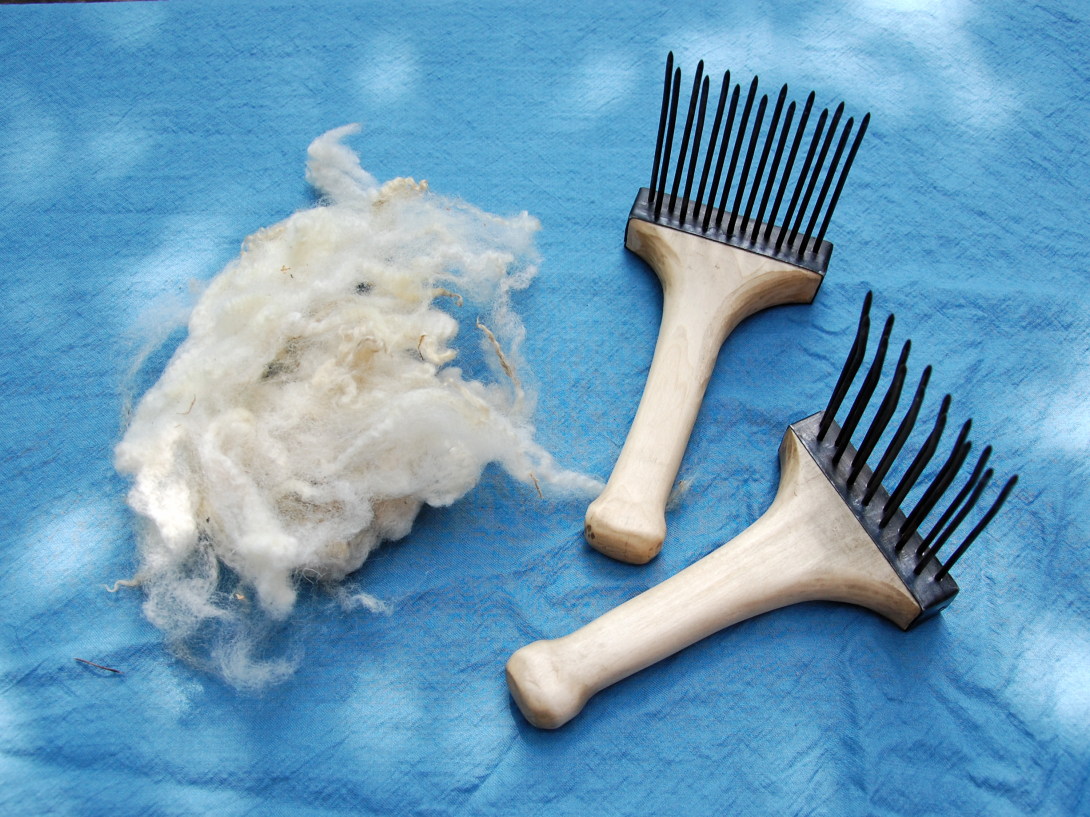
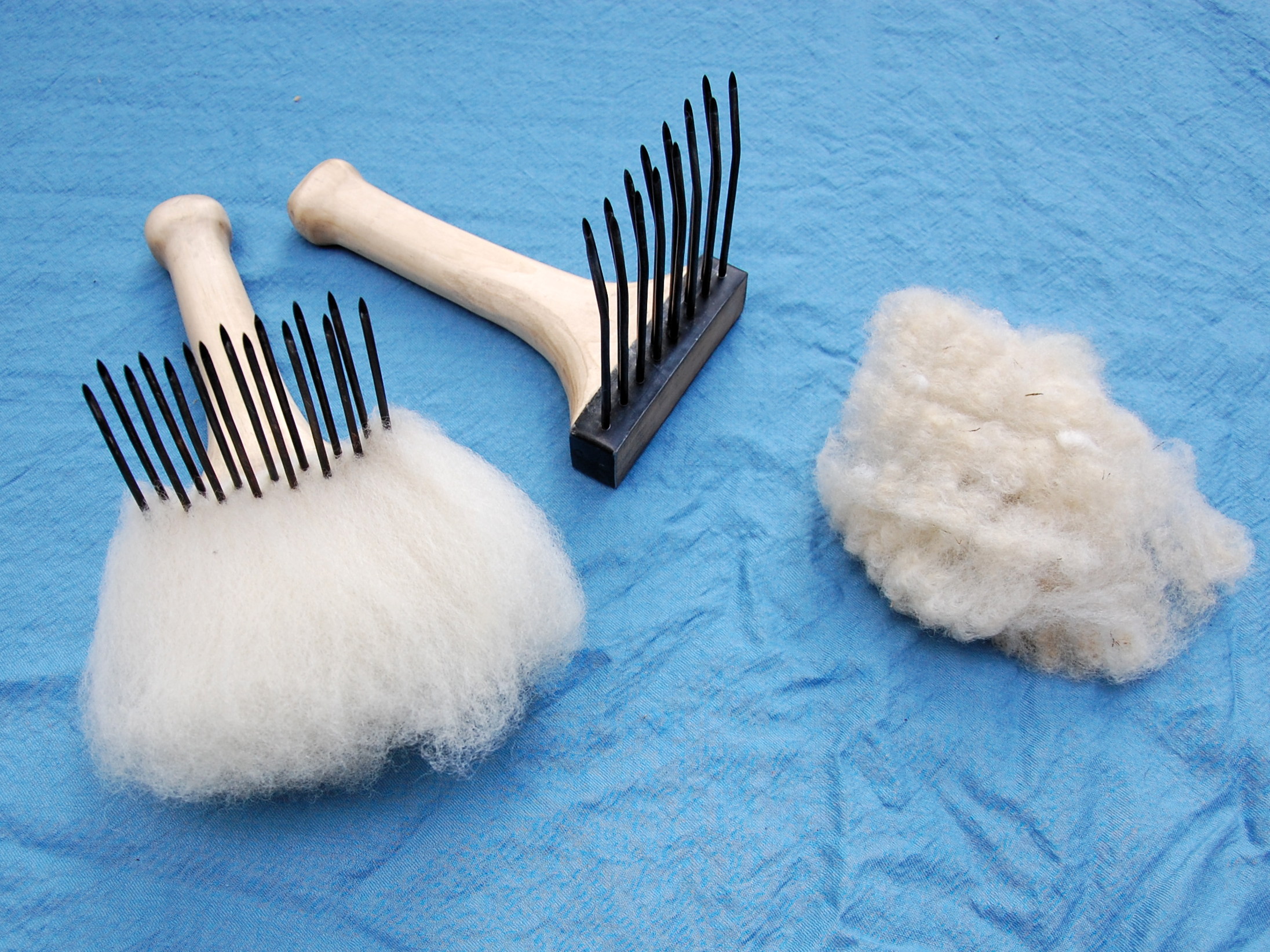
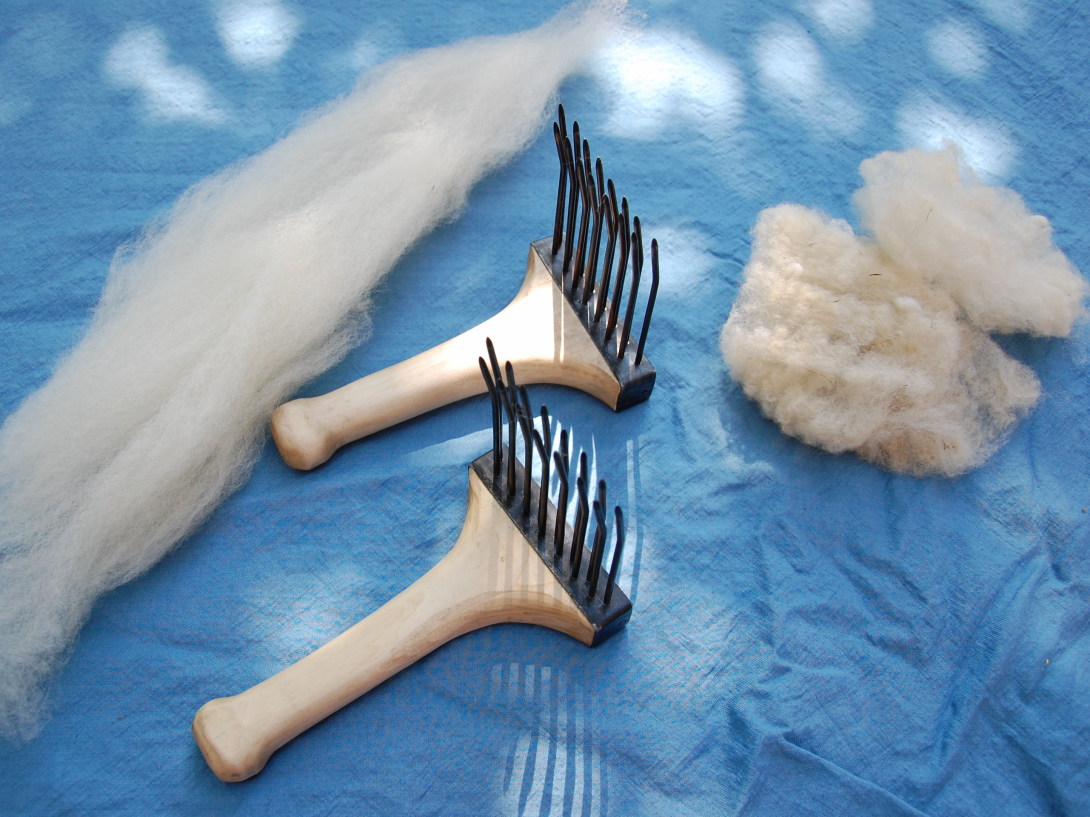
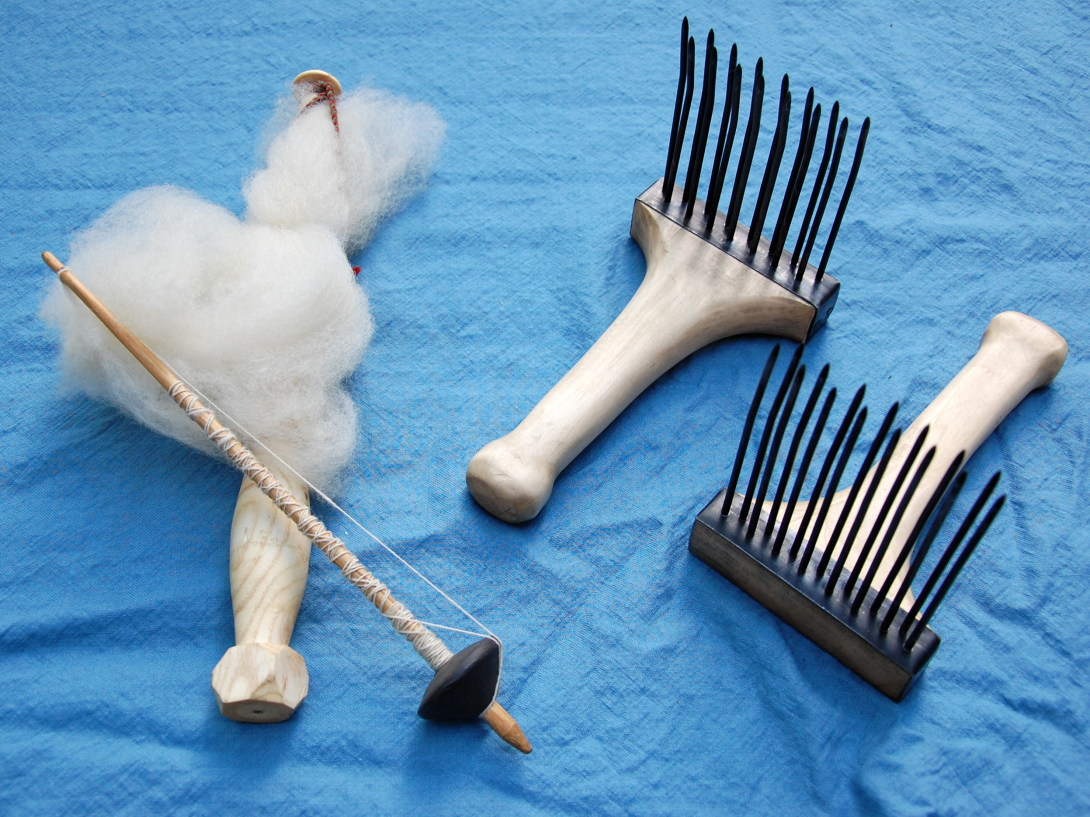
Apart from that, it is possible to separate "wool" and "hair": Originally, the fur of sheep consists of two kinds of fiber, the dense and isolating wool and the coarser and more sturdy hair. Usually the wool is shorter and finer while the hair is longer and thicker. During the Viking Age, hair has often been used for the warp and sewing threads and wool for the weft in textiles.
Wool combs, or their teeth, have been found at different places in Scandinavia. The comb was wooden and the teeth made of iron, at least 5cm long, some millimeters thick and stood approximately 5mm apart from each other. The combs were used in a pairwise manner with one of them being stationary. Some of the raw wool fleece is being applied to the stationary comb and then combed with the working one. By doing so, the fibers are transferred to the working comb. All fibers which are too short or too knotty get caught between the teeth of the stationary comb and can be sorted out as not usable. We already recognized that the amount of this "trash" varies with the sheep's race. When all usable wool has been transferred, the combs change their functions and one starts all over again, until all "trash" is sorted out. Now the fibers can be pulled from the comb and are ready for further processing.
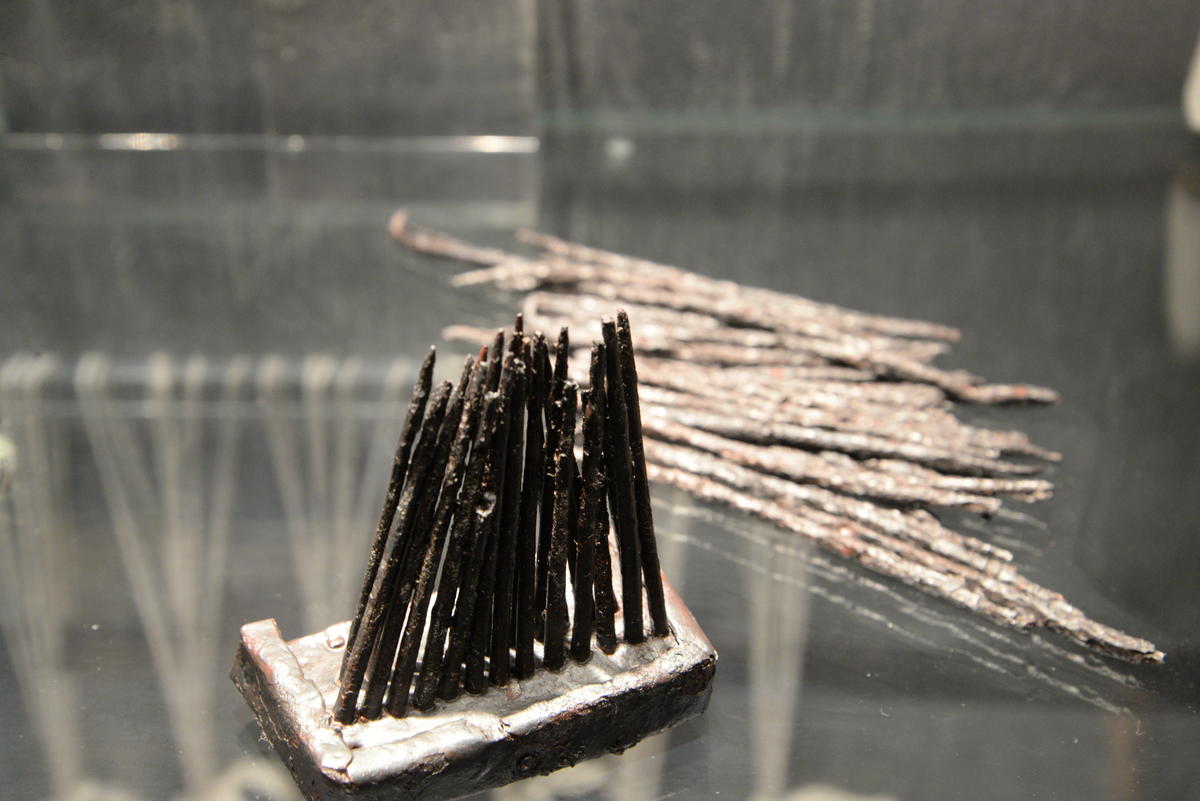
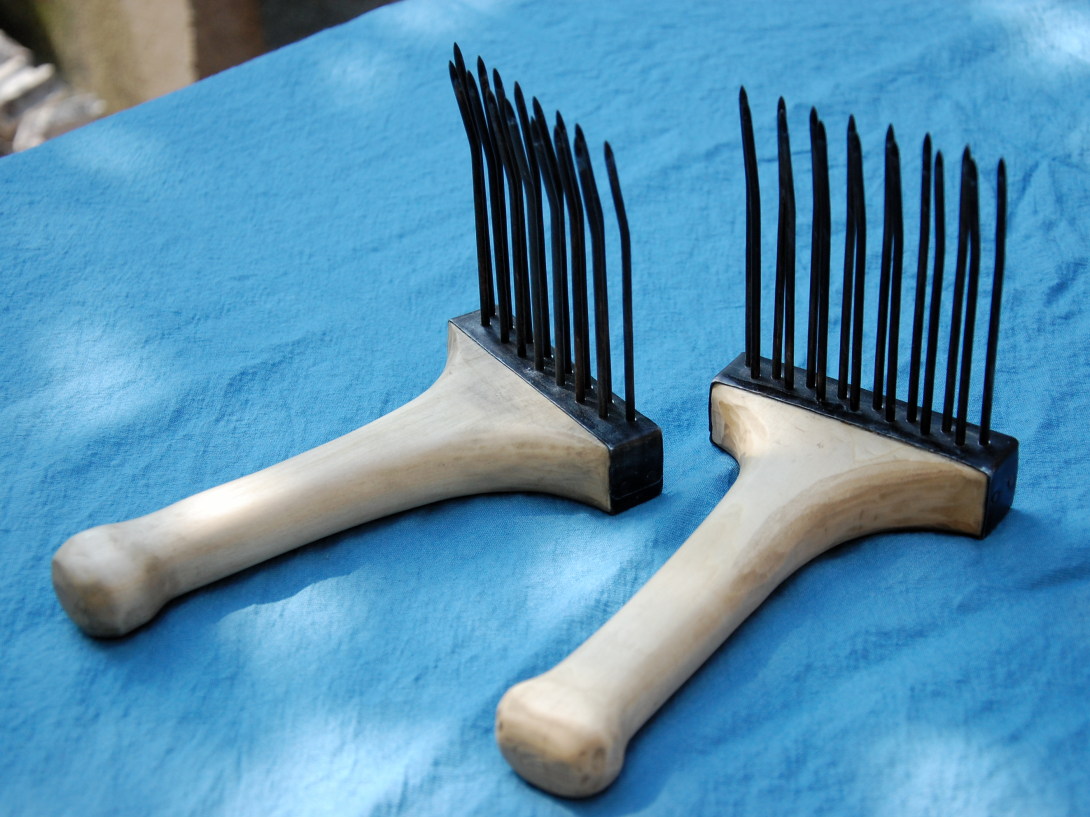
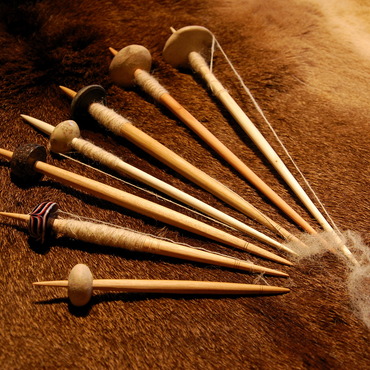
Levels of Textile Production
According to Eva Andersson Strand, four different levels of textile production can be distinguished.
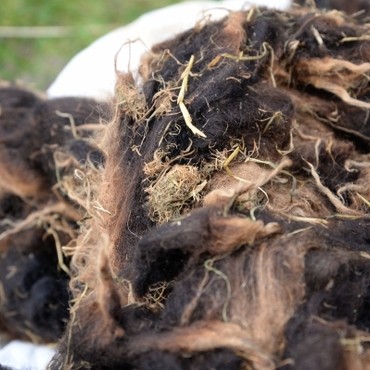
Raw Wool
The raw wool contains everything left in there when the sheep is shorn. Including insects, flora and things from the stable floor.
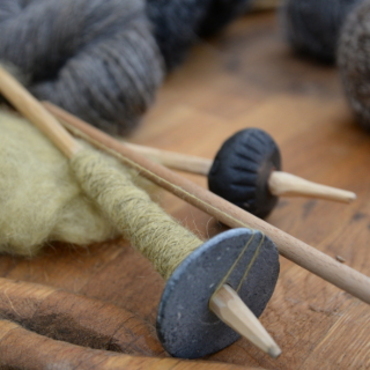
Spinning
With the spindle, the wool is spun into a thread.
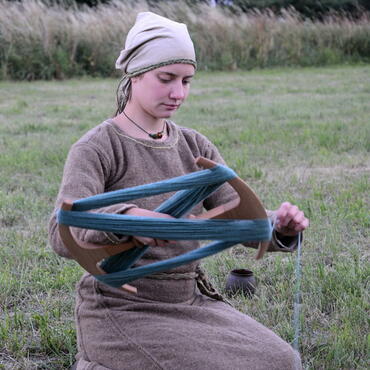
Using a niddy noddy
After spinning, the yarn might be wound onto a niddy noddy.
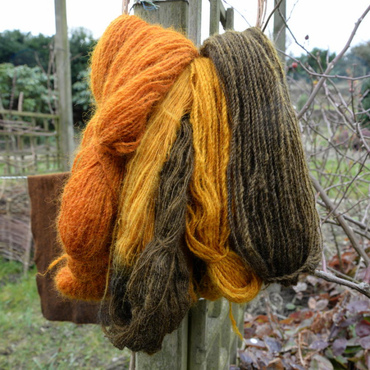
Dyeing
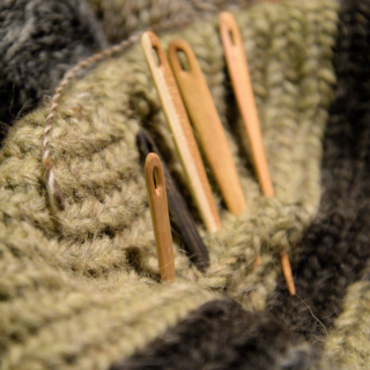
Nalbinding
Different garments can be produced with this old technique.
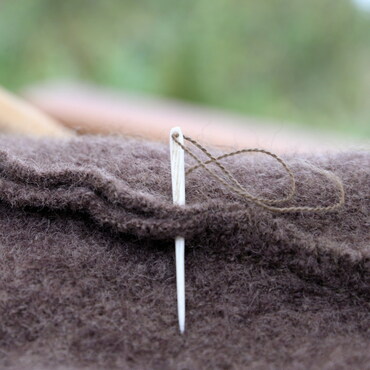
Sewing
Finally, pieces of cloth are sewn into garments.